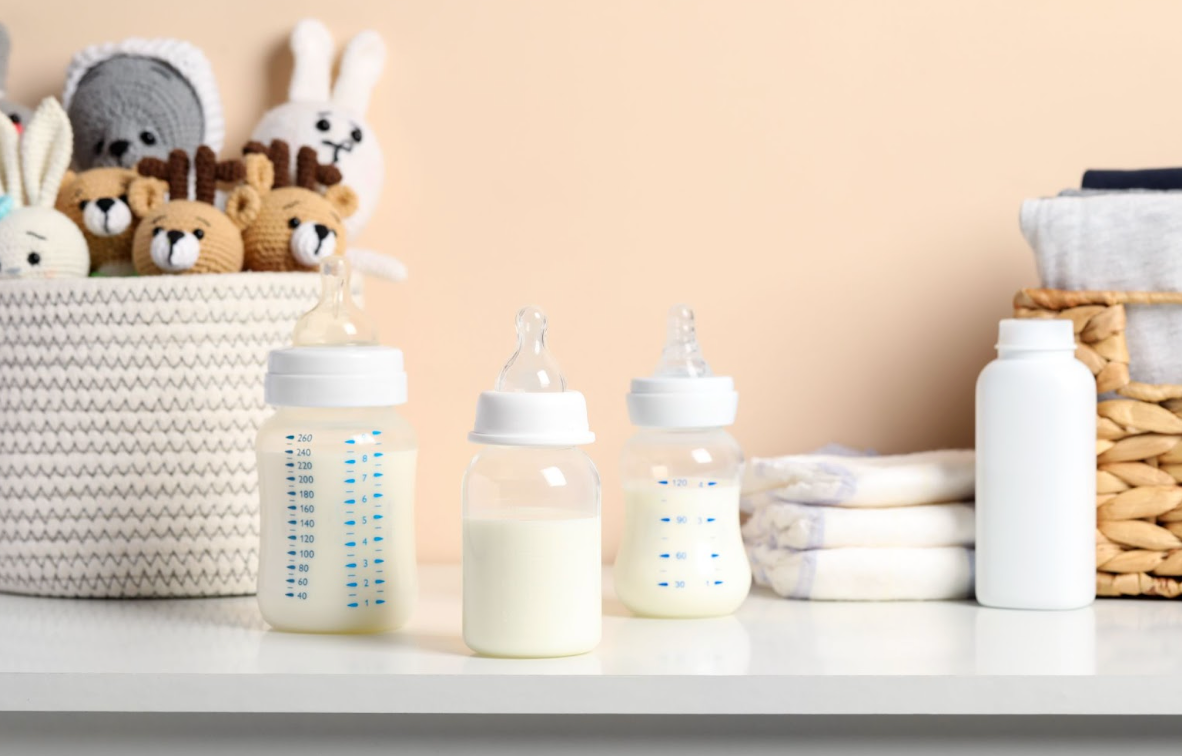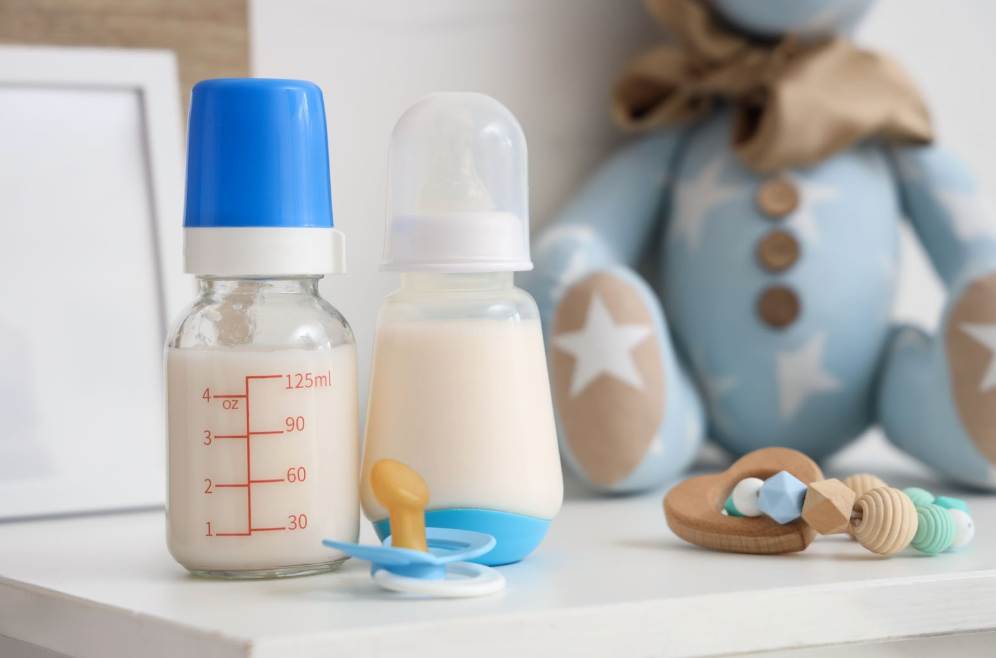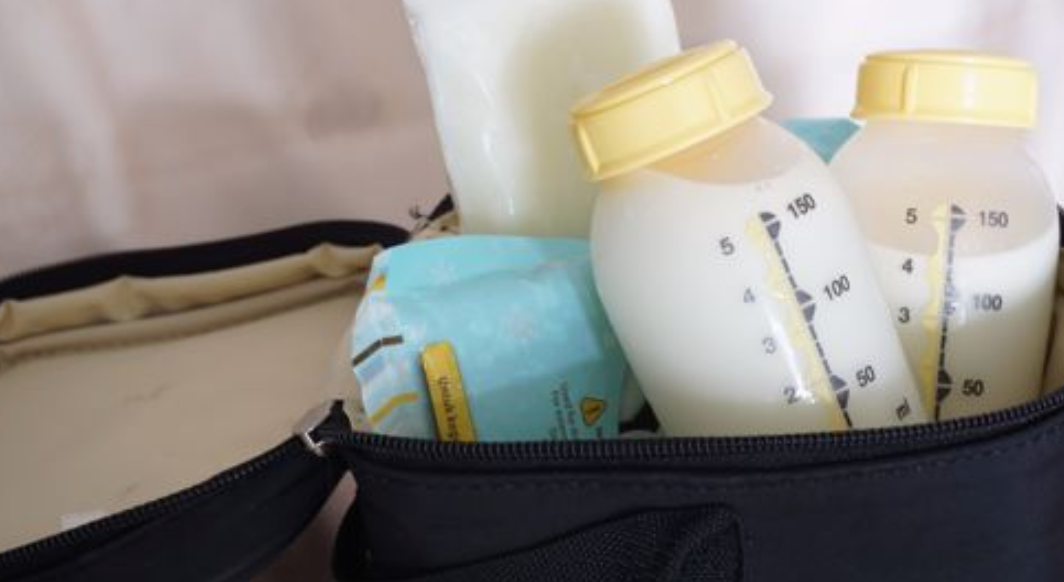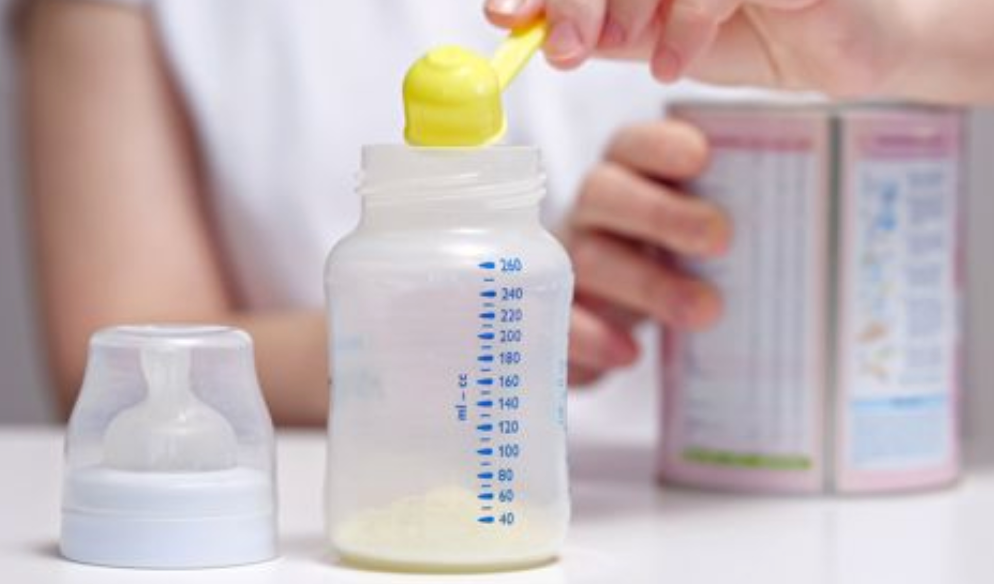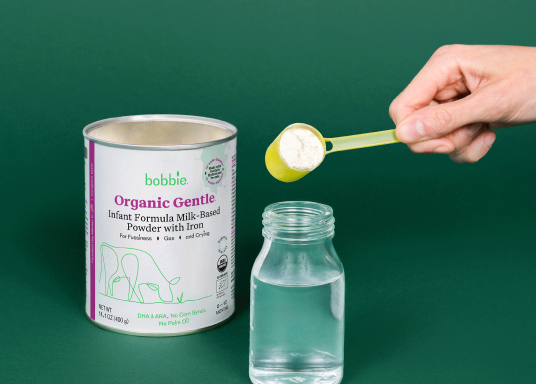Published October 9, 2025
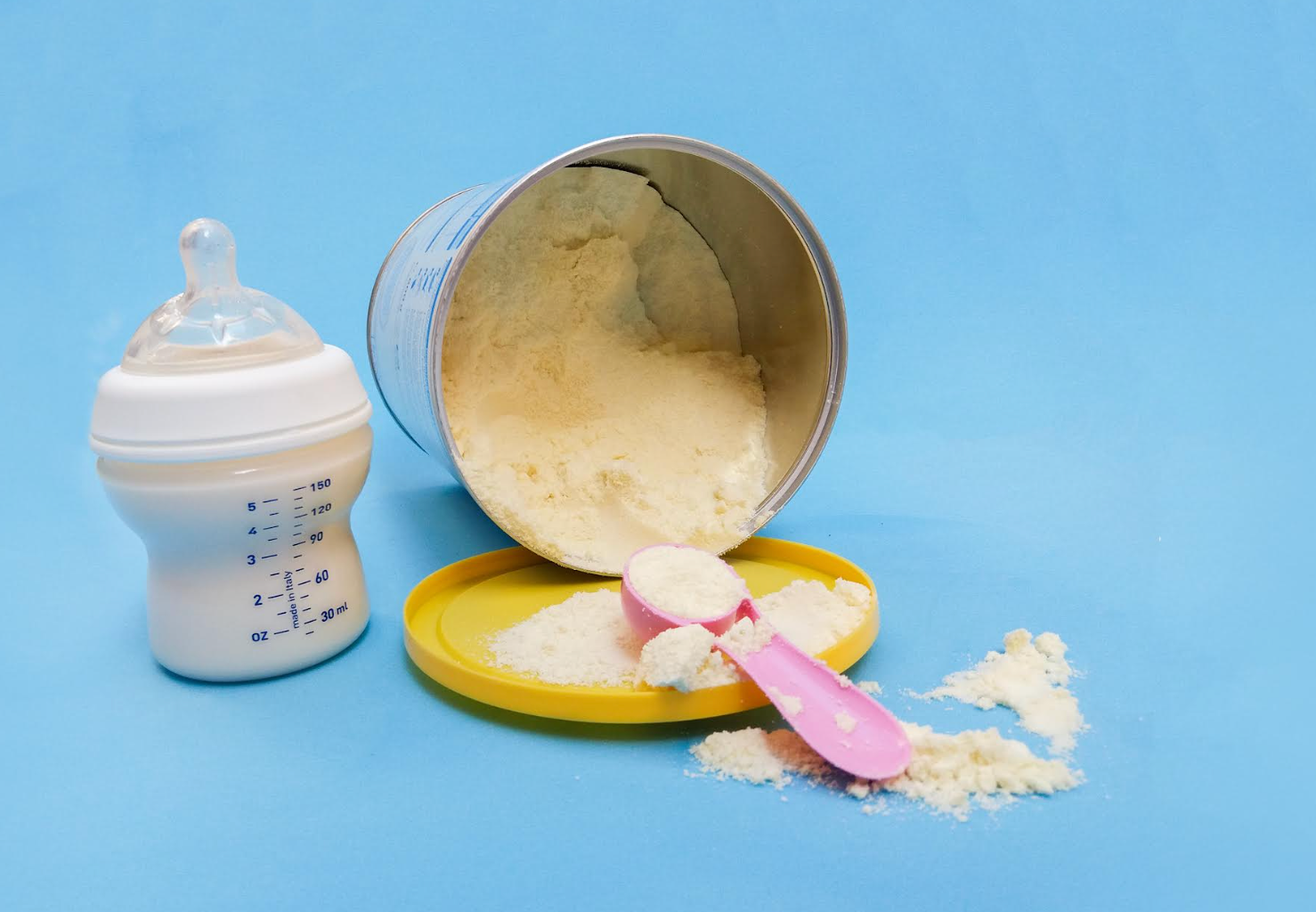
Can You Mix Breast Milk and Formula? A Supportive Guide to Combo Feeding
Wondering if you can combine breast milk and formula? The answer is yes. Many families pursue combination feeding, and for good reason. It takes some pressure off relying on a single feeding method while still providing your baby with the nutrition they need to keep growing.
In this guide, we’ll walk through the dos and don’ts of mixing breast milk and formula, explain how to do it safely, share real benefits and common concerns and point you toward resources if you need extra support along the way.
The Dos and Don’ts Of Mixing Breast Milk and Formula
Let’s clear this up right away: yes, you can combine breast milk and formula if you prepare it correctly. Pediatricians agree on this point.
But mixing can mean two different things, and it’s worth spelling out:
-
Same-bottle mixing: Breast milk and prepared formula are combined in the same bottle before feeding.
-
Alternating bottles: Your baby sometimes receives expressed breast milk, other times formula, never in the same container.
Both approaches fall under combination feeding, or mixed feeding, but the safety rules differ slightly.
Here’s the golden rule: always prepare infant formula exactly as directed first — using the right water-to-powder ratio — before adding any breast milk. Never stir powdered or concentrated formula directly into expressed breast milk. The formula needs proper dilution for safe nutrition and digestion.
If you’re feeding a premature baby, a breastfed baby under two months or a little one with a medical condition, ask your pediatrician first. In some cases, exclusive breastfeeding or carefully measured fortified formula might be necessary. A lactation consultant or pediatric dietitian can help you create a feeding method tailored to your baby’s needs.
Looking for tips on timing? Here’s a helpful resource on a baby’s feeding schedule.
Why Some Families Combine Breast Milk and Formula (And Love It)
Combination feeding takes pressure off a single feeding method while keeping the benefits of breast milk in the mix. Families choose to combo feed for all kinds of reasons:
-
Low milk supply: When pumping constantly or nursing around the clock doesn’t increase milk production enough to meet your baby’s needs.
-
Returning to work: Formula feeds during the day can ease the transition back to your job while you continue breastfeeding at home, if pumping enough during the work day is difficult.
-
Shared feeding responsibilities: Partners, grandparents and caregivers can help with bottle feeding, giving you a break if needed.
-
Lifestyle flexibility: Combination feeding may make travel, appointments and nighttime schedules more manageable.
Some parents try formula milk just for one evening feed, while others set up a regular combination feeding schedule. And yes, it’s normal to experiment. Babies have preferences too — what works this week may shift in a month.
For a deeper dive into the basics, check out the basics of formula feeding.
How To Mix Breast Milk and Formula Safely
Once you’ve decided to try mixed feeding, following the right steps keeps every bottle safe.
Step 1: Choose your formula
Look for a formula that meets FDA nutrition standards and works well for your baby’s digestion. Bobbie Organic Infant Formula is Clean Label Project certified, modeled after European-style recipes and designed for easy digestion — a great fit for families exploring combination feeding.
Not sure where to start? Try this formula quiz to compare options.
Step 2: Prepare the formula
-
Wash your hands.
-
Use sterilized bottles, especially for newborns.
-
Follow the instructions on the container for infant formula preparation.
If you’re using powdered formula or concentrated liquid formula, always mix it with the correct amount of safe, warm water first. Safe water means tap or bottled water that’s been tested or treated so it’s free from harmful bacteria. For newborns under two months or babies with weakened immune systems, boiled and cooled water is often recommended for extra peace of mind.
Here’s a guide on types of infant formula if you want more details.
Step 3: Add breast milk after formula
Once the prepared formula is ready and cooled to feeding temperature, you can add expressed breast milk. This balances the nutrients and avoids accidental over-concentration.
Step 4: Mix just before feeding
Don’t pre-mix bottles hours ahead unless you plan to refrigerate them immediately. Once your baby starts drinking, the one-hour rule applies — after 60 minutes, toss whatever’s left.
Step 5: Store carefully
-
Freshly pumped breast milk: Up to four days in the fridge, six months in the freezer.
-
Formula or mixed bottles: 24 hours in the fridge, one hour after feeding begins.
Learn more about storage times and how long the formula is safe for consumption.
What To Expect When Mixing: Tips, Tummy Troubles and Transitioning
Switching feeding methods can sometimes bring minor tummy changes.
-
Gas or fussiness: Common when babies take in extra air when bottle feeding. Burping breaks and slow-flow nipples can help.
-
Taste adjustment: Formula milk tastes different from human milk. Some babies take to it right away, while others do better when mixed bottles are gradually introduced.
-
Poop changes: Expect firmer stools that are sometimes darker in color, compared to those of babies exclusively breastfeeding.
If you notice persistent digestive issues, here’s a resource on baby formula intolerance.
And remember, combination feeding doesn’t cancel out breastfeeding. Every ounce of breast milk still carries antibodies, nutrients and comfort for your baby.
FAQs
Can you mix formula and breast milk in the same bottle?
Yes — if you prepare the formula first, then add expressed milk afterward.
Can I pre-mix bottles for later?
Yes, but store in the fridge immediately and use within 24 hours. Once feeding starts, discard leftovers after one hour.
Will it affect my breast milk supply?
Possibly. Milk supply runs on demand — less breastfeeding or pumping may result in reduced production over time. To maintain supply, start by nursing, then supplement with formula feeding or a mixed bottle.
Will my baby notice a difference in taste?
Maybe at first. Combining expressed breast milk with formula milk can help ease the transition.
When should I call the pediatrician?
If your breastfed baby shows signs of formula intolerance, poor weight gain, or persistent feeding troubles, check in with your care team.
A Gentle, Organic Formula That Complements Every Feeding Style
Bobbie was designed for families looking for baby formula that feels like a natural extension of their feeding routine. Our organic whole milk formula takes cues from trusted European standards, with a recipe that’s non-GMO and made without corn syrup for easy digestion, while meeting FDA nutritional requirements for infants.
Because combination feeding often means switching between breastfeeding, bottle feeding and sometimes mixed feeding in the same day, the formula you choose matters. Bobbie’s mild flavor and smooth texture blend seamlessly with breast milk when families decide to mix bottles, helping babies adjust without fuss.
Parents juggling pumped milk, work schedules or low milk supply often say Bobbie fits into their lives without adding complications. It offers peace of mind on the nutrition front, leaving you free to focus on your baby rather than measuring out ingredients you can’t pronounce.
Explore our full baby formula range to see why so many families trust Bobbie to complement your feeding journey.
Trust Yourself, Feed Your Way
At the end of the day, feeding is a relationship between you, your baby and what works best in real life.
Combination feeding helps families customize their routine — mixing breast milk and formula milk as needed without guilt. Some days, this might mean mostly breastfeeding. Other days, it might mean formula bottles while you work, rest or simply take a breather.
Here’s a guide on combo feeding schedules to see real-life examples.
If you’re ready to explore formula options, shop Bobbie to find a milk formula designed for modern parents — supportive of every feeding journey.
The content on this site is for informational purposes only and not intended to be a substitute for professional medical advice, diagnosis or treatment. Discuss any health or feeding concerns with your infant’s pediatrician. Never disregard professional medical advice or delay it based on the content on this page.








